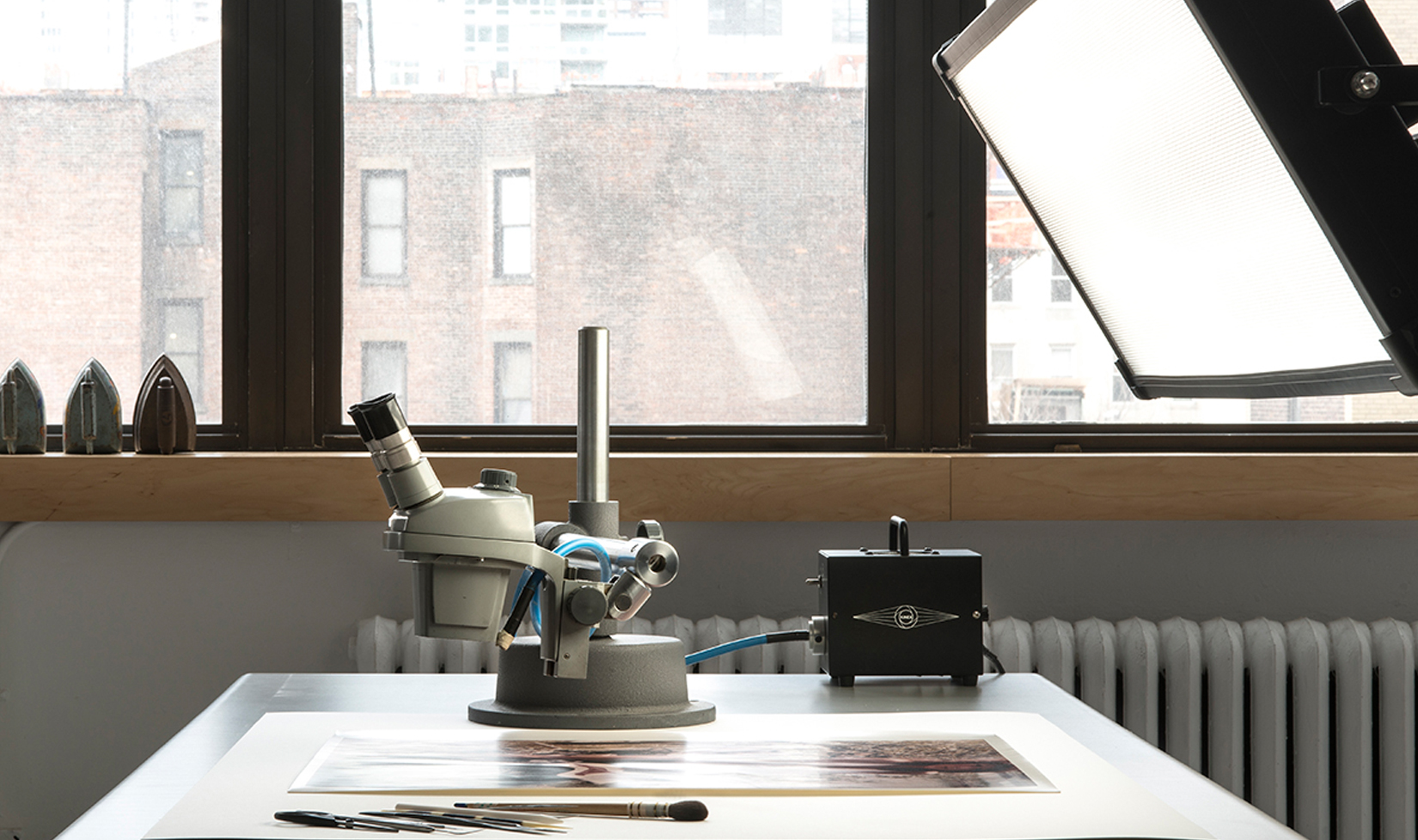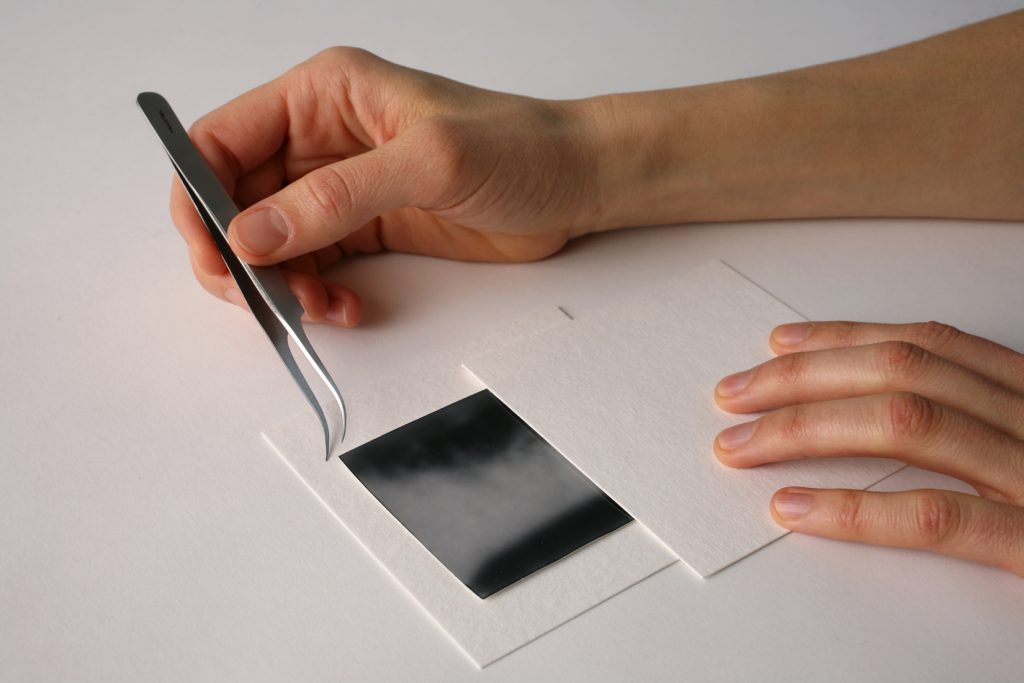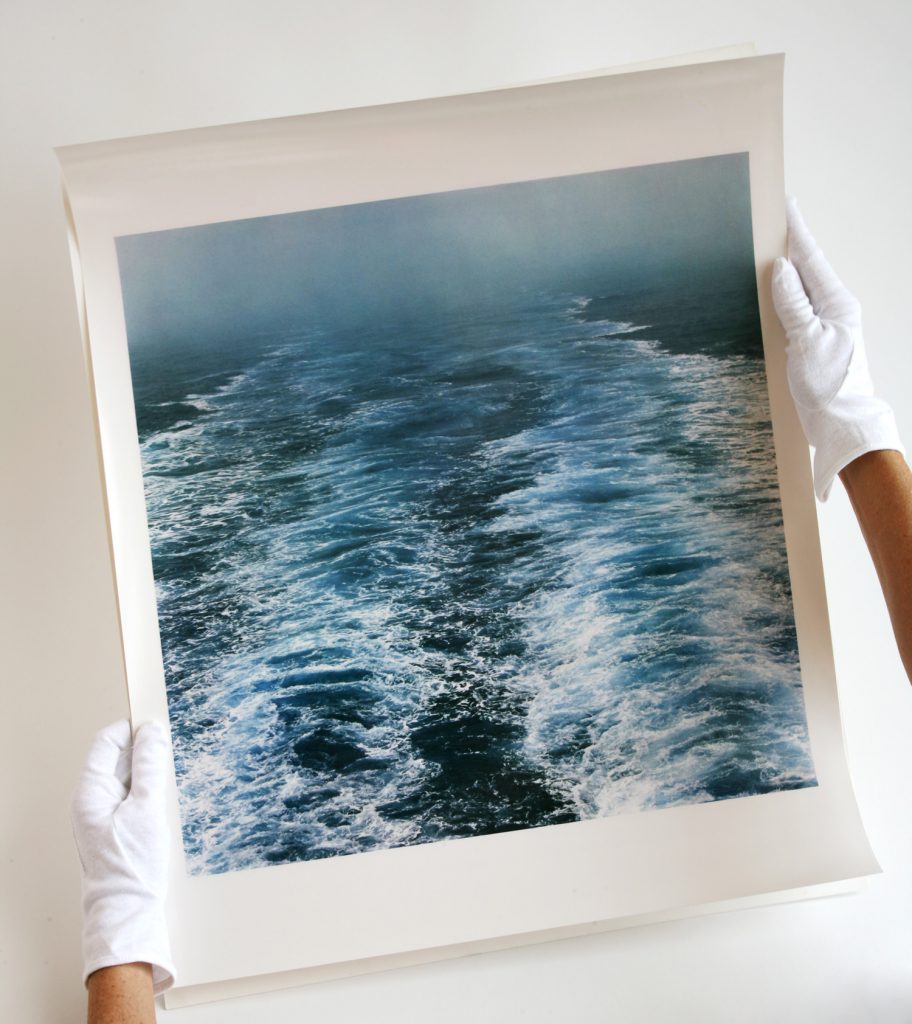The nature of surface-mounted chromogenic color photography is to intimately join the photographic print with an acrylic glazing to create a single object inextricably fused together. Although visually this makes for an impressive presentation, as conservators we recognize that it presents a potential problem should any damage occur to the acrylic surface from either side. Any inadvertent damage in the form of a scratch, abrasion or crack comes very difficult to rectify satisfactorily using known conservation techniques. Extreme handling precautions are always recommended. Remember that with this mounting technique, the acrylic surface IS the surface of the artwork.
There are a number of physical damages that these pieces may be subjected to. Some types of scratches can be treated by careful application of an abrasive micro-alumina polish. The treatment is done under high magnification, with all possible care but the area around the deepest scratches will be altered and may be still visible, though reduced, even after treatment. Our goal is to soften the edges of the scratch so that it does not cast as deep a shadow and thus minimize the light-scattering effect. This kind of treatment can only be performed on a glossy acrylic surface as there is currently no reliable way for reproducing the texture of matte acrylic surfaces.
Acrylic is a very soft, gas permeable and an easily charged material. By wiping a dry cloth over the surface of this piece a static charge can be created that will attract more dust and other particulates. Although invisible at first to the naked eye, over the years these fine scratches can accumulate, aggregate and become visible as cloudy areas. Dry abrasion must be avoided by all measures when cleaning the surface of this work to avoid scratches. Similarly, the use of any solvent-based Plexiglas cleaners, even those designed for cleaning or polishing acrylic surfaces is to be avoided. Usually composed of proprietary ingredients that can be changed at the whim of a manufacturer, these commercial products, although effective in the short term, may possibly lead to future problems such as crazing and clouding of the acrylic.




